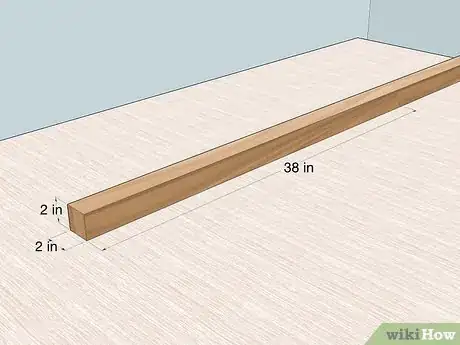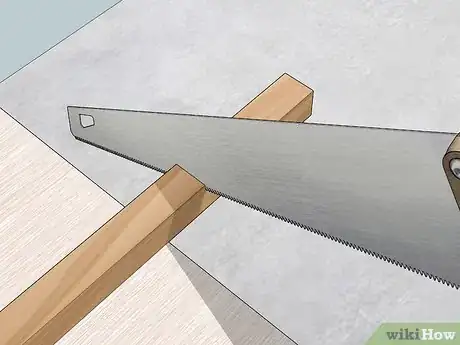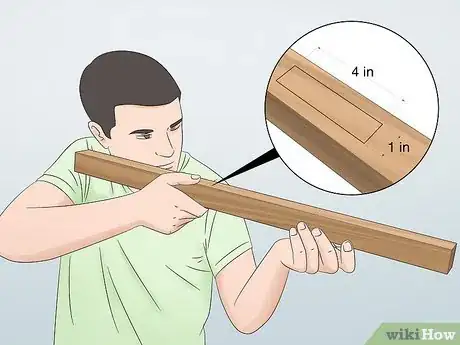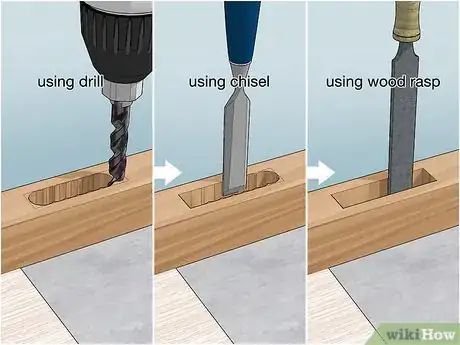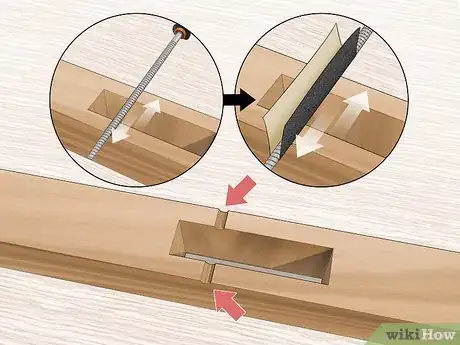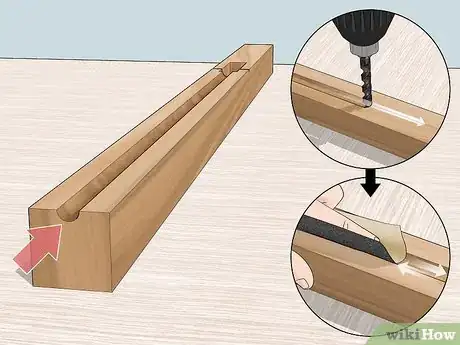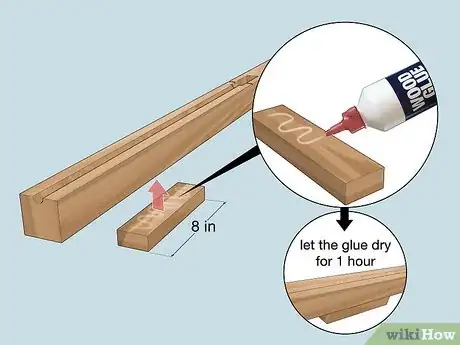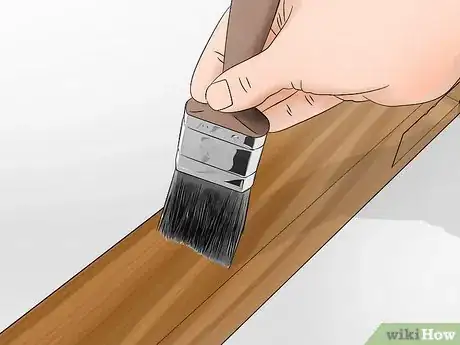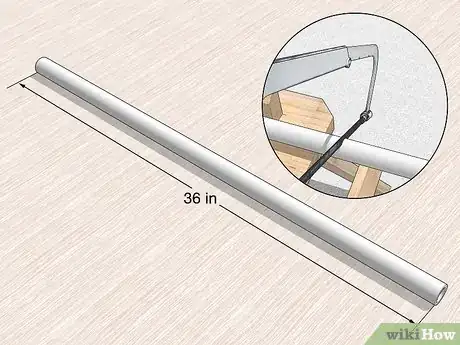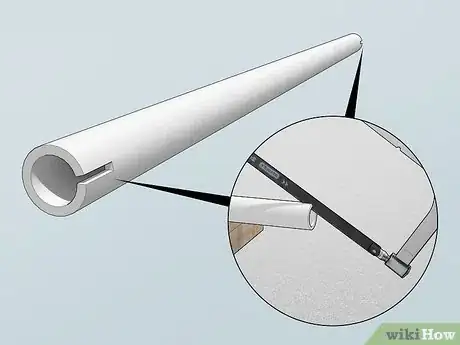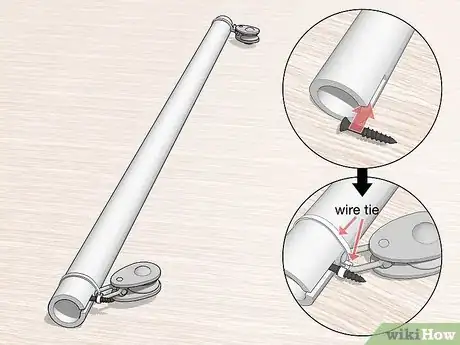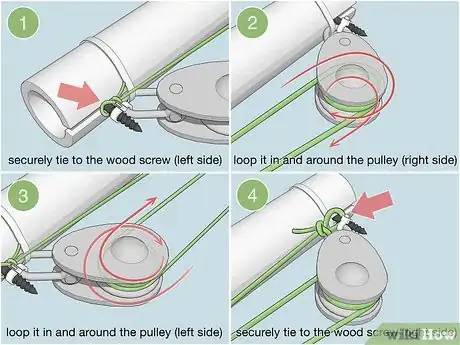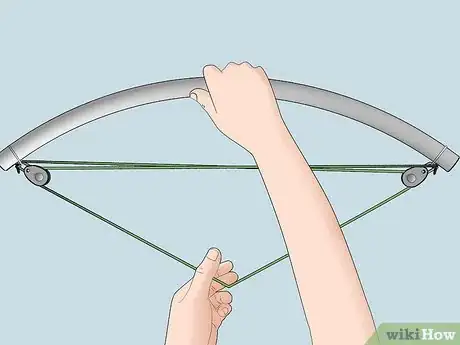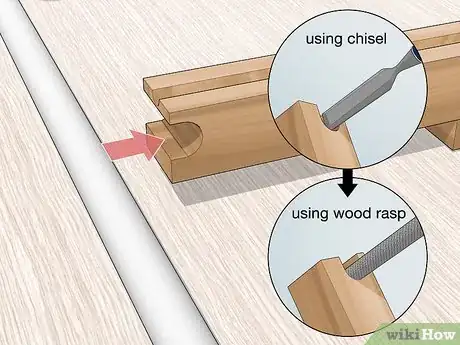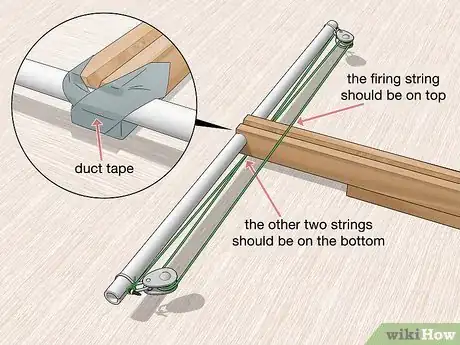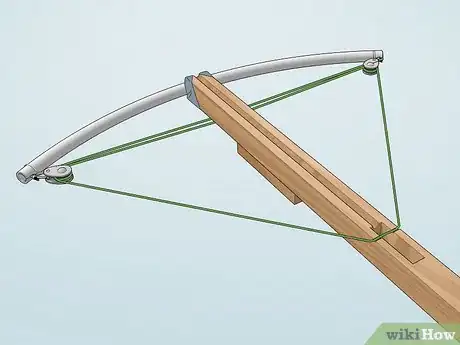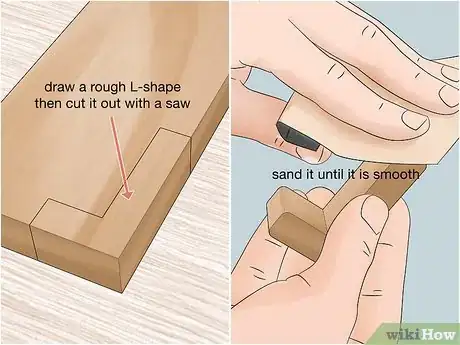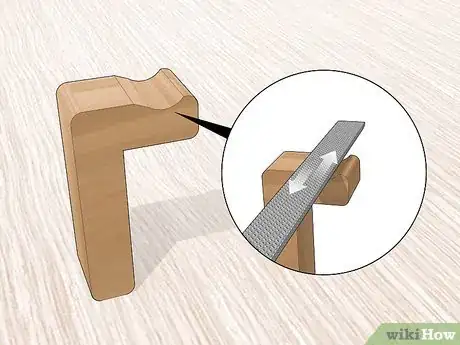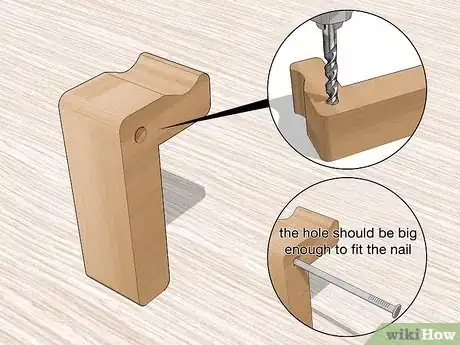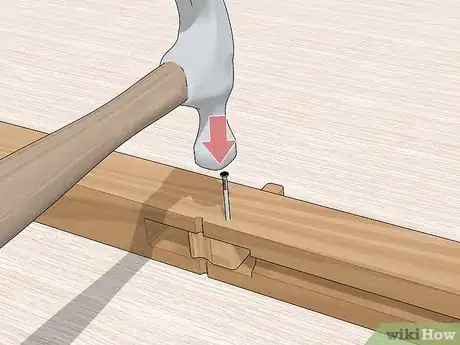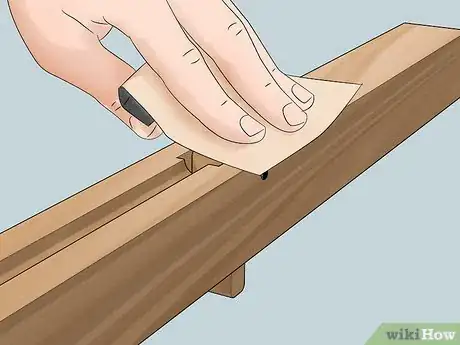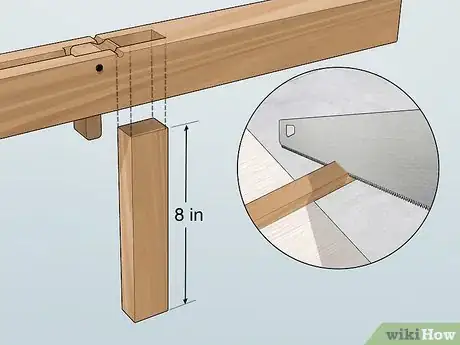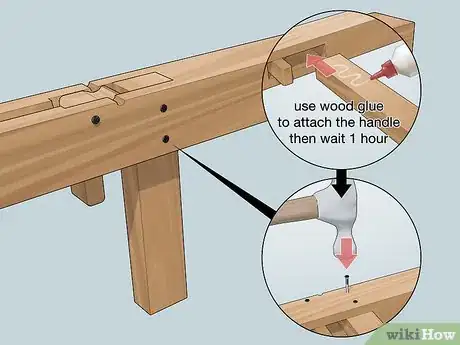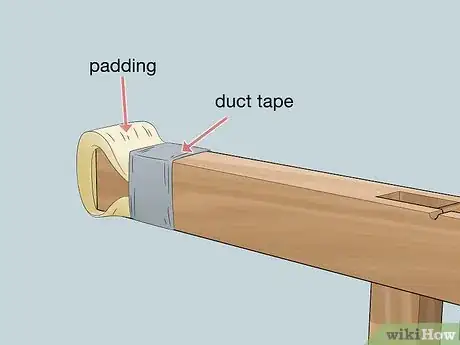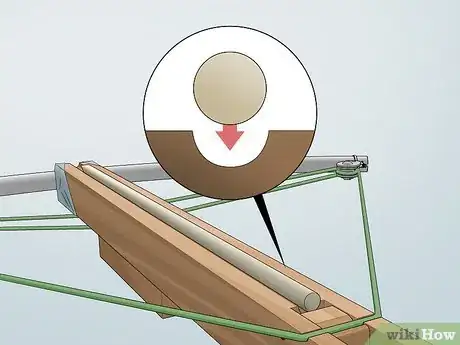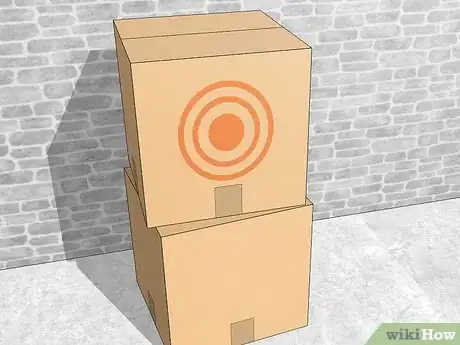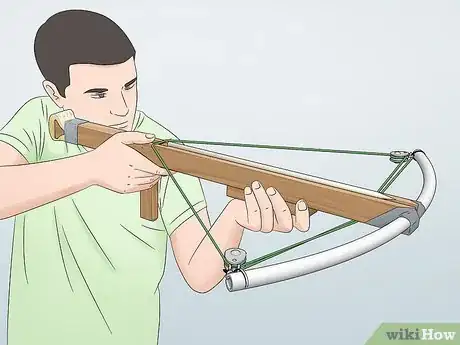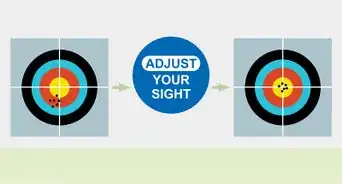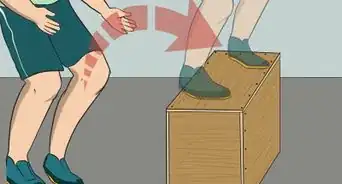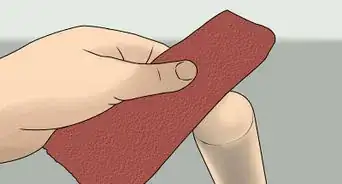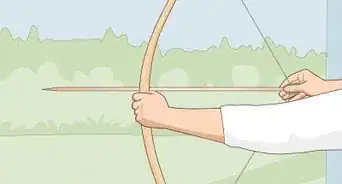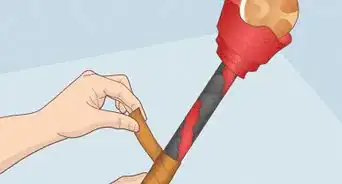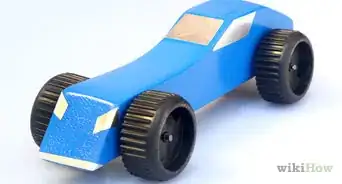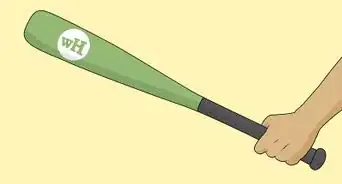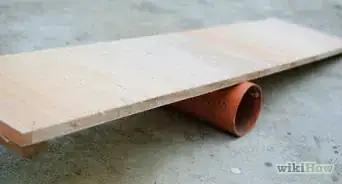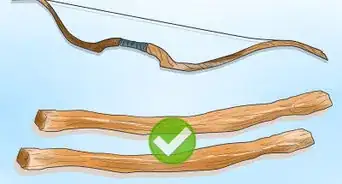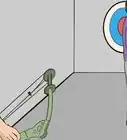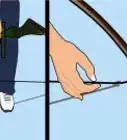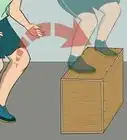wikiHow is a “wiki,” similar to Wikipedia, which means that many of our articles are co-written by multiple authors. To create this article, 33 people, some anonymous, worked to edit and improve it over time.
wikiHow marks an article as reader-approved once it receives enough positive feedback. In this case, 88% of readers who voted found the article helpful, earning it our reader-approved status.
This article has been viewed 790,080 times.
Learn more...
A crossbow is a weapon that has a horizontal bow mounted on a stick, called a stock. It shoots projectiles, called bolts, at a target. Modern crossbows are compound crossbows which have stiffer limbs to make the bow more energy efficient and a string attached to a pulley system to make it easier to draw back with increased power as the bolt is fired. The pulley system also ensures a smooth release of the bolt. Using supplies from your local hardware store, you too can make your own crossbow.[1]
Steps
Building the Crossbow Body
-
1Measure wood for the stock. You need to have the stock a comfortable length for your arms.[2]
- Start with pine board that measures around 38 inches long, 2 inches wide, and 2 inches tall.
- Hold it in your hands similar to a rifle with one end pressed against your shoulder and your hands gripping the wood.
- Find a comfortable length and mark the wood where you want it cut.
- The longer your stock is, the more power you will achieve. However, it is not wise to go over 1 meter (3.2 feet) so the PVC bow won't shatter.
-
2Saw off the extra wood. Use a circular or hand saw to cut the wood on the mark you made for length.
- Use safety goggles to make sure you don't get sawdust in your eyes.
- Saw in a well ventilated area.
-
3Mark the area for a trigger. Hold up the wood again as you would a crossbow stock, with one end pressed against your shoulder and your hands gripping the wood. Make a small mark where it feels comfortable to have the trigger and the handle.
- Draw a rounded rectangle shape in the center of where you marked the trigger. This needs to be drawn on the top of the pine wood, not the side.
- The rectangle should be around 4 inches long, and 1 inch wide.
- Make sure the rectangle is drawn in the center of the wood where you have marked it.
-
4Cut the rectangle out of the wood. Using a chisel, drill and wood rasp, gouge out the wood within the rectangular area while being very careful not to split the wood.
- Use a combination of all three tools to slowly remove the wood inside the rectangle until you have a rectangle shaped hole.
- Use sandpaper to smooth the area around the hole after you have finished.
-
5Make the groove to hold the string. The groove will create a place for the string to rest horizontally across the rectangle hole.
- Use a chisel or wood rasp to create a 1/8 inch groove near the front of the trigger hole.
- Sand the groove after it is cut.
-
6Cut the groove that holds the bolt. This grove will be centered and extend from the rectangle hole to the end of the wood.
- Find and mark the center of the end of the wood, farthest from the string groove.
- Find and mark the center of the end of the rectangle hole, farthest from the string groove.
- Draw a straight line between the two marks.
- Use a drill, chisel, and hammer to carve a ¼ inch deep channel along the marked line.
- Sand the groove until completely smooth.
-
7Create the grip to hold when shooting. Use a second piece of pine wood to make the grip.
- Cut the wood to be around 8 inches long.
- Use PVC glue or wood glue to attach it to the bottom of the stock, making sure it is centered. Leave the glue to dry for at least an hour.
-
8Protect the wood with sealer. Use varnish, wood stain, or another wood sealer to ensure the wood will be protected from the elements.
- Wait until the glue has dried completely before applying a sealer.
Making the Bow with PVC Pipe
-
1Cut the PVC pipe. Use a hacksaw to cut a 1” PVC pipe into a 36 inch length.[3]
- Make sure to measure and mark the length before cutting to ensure accuracy.
-
2Cut a groove into the ends of the PVC pipe. On each end of the PVC pipe, use a hacksaw to cut a small groove just large enough to fit a small wood screw.
-
3Attach the pulleys. The pulleys are attached to either end of the PVC bow, and the string will feed through them.
- Insert a small wood screw on both ends of the PVC pipe.
- Attach the pulleys to the wood screws on either end of the pipe using wire ties.
-
4Thread the string. The nylon string needs to be threaded through both pulleys correctly for the crossbow to be able to fire.
- Securely tie one end of the nylon string to the wood screw on the left side of the PVC pipe.
- Bring the string across to the pulley on the right end of the PVC pipe, and loop it in and around the pulley.
- Bring the sting back to the left side and loop the string in and around the pulley on the left.
- Finally, bring the string back to the right and tie it securely to the right wood screw.
- Do not pull the string tightly when you wrap around the pulleys or you will not be able to pull it back to fire the crossbow.
-
5Check the string for accuracy. It's important to have the string threaded correctly. The string should run across the PVC pipe 3 times. Do a quick test to make sure you have threaded the string correctly.
- Pull on the string coming out of the pulleys. The PVC pipe should flex like a bow.
- If the pipe does not bend slightly like a bow would, pull the thread out and start again.
Attaching the bow to the stock
-
1Create a groove for the bow on the end of the stock. The wood of the stock needs to have a groove carved in for the round PVC pipe to snugly fit.
- Use a wood rasp or chisel to carve out a rounded groove wide enough to fit the pipe on the end of the wood stock.
- The groove needs to be deep enough to fit the PVC pipe securely.
- Carve slowly while repetitively checking how the pipe fits. This will ensure you end up with the perfect fit. The pipe shouldn't have room to move around.
-
2Secure the PVC bow to the stock. The bow needs to be secured to the stock to ensure proper use. You need to have the strings in the correct place for the crossbow to be effective.
- Use duct tape to secure the PVC pipe to the stock by wrapping it around the pipe and the end of the wood stock.
- Only the firing string coming out of the pulleys should be on top of the wood. The other two strings should be on the bottom so they don't interfere with the firing process.
-
3Test the bow. You need to test to make sure the strings are in the right place and the bow will fire correctly.
- Draw back the firing string and place it in the string notch on the rectangle hole. It should be able to stay notched and ready by itself.
- If the string will not stay notched, you need to make the groove deeper to hold the string.
Constructing the trigger system
-
1Cut the wood for the trigger system. Use a thinner piece (around 1 inch thick) of pine wood to create the trigger system.
- Draw a rough L-shape on the wood.
- The small (horizontal) portion of the “L” shape should be slightly smaller than the box you carved in the stock.
- Cut the L-shape out of the wood with a saw. This L-shaped piece of wood will be the trigger.
- Sand it until it is smooth.
-
2Create a channel on the trigger. Use a wood rasp or chisel to carve about a ⅛ inch channel across the short part of the L-shaped wood.
-
3Drill a hole in the L-shape wood. The hole should be drilled down by the corner of the L, but centered in the wood.
- The hole should be big enough to fit the nail you are using to attach it to the stock.
-
4Attach the trigger. You need to attach the trigger onto the stock so that it will pop the string out of the groove when pulled.
- Put L-shaped trigger in the rectangle hole with the groove facing upwards and the L pointing forward. Make sure it has space to move without hitting the back of the hole.
- Use a hammer to push a nail through the stock and hold the L-shaped trigger in place at the angle.
-
5Sand the trigger. Use sand paper to fine tune the trigger until the action is smooth.
Building the Handle and Butt
-
1Cut the handle. The handle is what you hold to steady the crossbow so you can pull the trigger.
- Use pine wood to cut a 20 centimetre (8 inch) length to be used as the handle.
- Sand it into the rough shape of a handle.
-
2Attach the handle to the stock. The handle should be attached behind the trigger so you can easily fire the crossbow.
- Use PVC or wood glue to attach the handle to the stock. Wait an hour for the glue to dry.
- When the glue is dry, you can use a hammer to drive a few nails into the handle to firmly secure it on the stock if you would like.
-
3Put padding on the butt. You use a crossbow by pressing the butt against your shoulder, so padding the butt of the crossbow will make it more comfortable.
- Secure foam around the end of the stock that is placed on your shoulder with duct tape.
Testing Your Crossbow
-
1Acquire the right size bolts. You need to have bolts that fit the channel of your crossbow.[4]
- You can either purchase bolts from a store or make your own out of dowels.
- To make your own bolts, cut a dowel to fit the size of the channel on your crossbow, and create a notch on the end of the dowel to hold the string.
-
2Set up a target. Use a cardboard box or a piece of paper with circles to aim your crossbow at. Make sure your target is away from other people.[5]
-
3Test fire your crossbow. Find a safe place to try out your crossbow. Your crossbow should shoot your bolts around 65 to 100 feet. Have fun!
Community Q&A
-
QuestionHow much should this project cost?
 Elias AlaouiCommunity AnswerIt depends if you already have some materials, but to buy the wood, saws and equipment I would say no more than $30.
Elias AlaouiCommunity AnswerIt depends if you already have some materials, but to buy the wood, saws and equipment I would say no more than $30. -
QuestionCan I change the power of the bow?
 Community AnswerYou can put another piece of PVC inside it, which might make it more powerful.
Community AnswerYou can put another piece of PVC inside it, which might make it more powerful. -
QuestionHow long will it take to make this?
 Community AnswerThis all could be done in a matter of a few hours, but if you want to be extremely accurate and want your crossbow to be top-notch quality, it could take a day or two (working less than 7 hours each day).
Community AnswerThis all could be done in a matter of a few hours, but if you want to be extremely accurate and want your crossbow to be top-notch quality, it could take a day or two (working less than 7 hours each day).
Warnings
- Check your local hunting laws to find out when and where you can shoot a crossbow.⧼thumbs_response⧽
- Crossbows are weapons that can cause bodily harm. Use with care.⧼thumbs_response⧽
- Do not shoot in public places.⧼thumbs_response⧽
- Do not use this crossbow to shoot a person.⧼thumbs_response⧽
- This project should be completed under the supervision of a responsible adult.⧼thumbs_response⧽
Things You'll Need
Materials:
- 2 x long piece of pine wood (approx. 1 metre/ 3.2 feet long)
- 1 x thin piece of pine wood (approx. 6cm/2.3 inches long, and 1 cm/ 0.393" thick
- 1 x length of 3cm/1.1" diameter PVC pipe (approx. 1 metre/ 3.2 feet long)
- Ball of nylon string
- 2 x miniature steel pulleys
- Roll of duct tape
- 6 x heavy duty tie clips
- 1 x square piece of foam
- 4 x wood screws (5cm/2" variety)
- 1 x wood nail (5cm/2" variety)
- PVC/Wood glue
- Wood stain/Varnish
- 6 pieces of thin dowel
Tools:
- Bench clamp
- Wood rasp
- Different grades sandpaper
- Ball point hammer
- Power drill (along with drill bits for screws and various sized drill bits for drilling holes in the wood)
- Pencil
- Hand saw
- Wood saw
- Hacksaw
- Chisel
- Wood rasp
References
- ↑ http://www.offthegridnews.com/self-defense/the-crossbow-an-alternative-weapon-for-the-modern-day/
- ↑ http://www.medievalcrossbow.info/
- ↑ http://www.motherearthnews.com/diy/make-a-crossbow-zmaz84sozraw.aspx?PageId=3
- ↑ http://diyworkplace.com/26-how-to-crossbow.html
- ↑ https://thecrossbowguide.com/best-crossbow-target-for-400-fps/
- Videos provided by DIY - DutchMan
About This Article
To make a crossbow, you’ll need a pine board that’s around 38 inches long for the stock, which is the wooden center of the crossbow. Once you have your pine board, you'll need to figure out where you want the trigger and handle, which you can do by holding the stock against your shoulder. After cutting the trigger and making a groove in the stock to hold the string, create a grip by adding another piece of wood to the bottom of the stock. Finish your crossbow by attaching PVC pipes and pulleys to make the bow. To learn how to make the bow with PVC pipe, keep reading!
